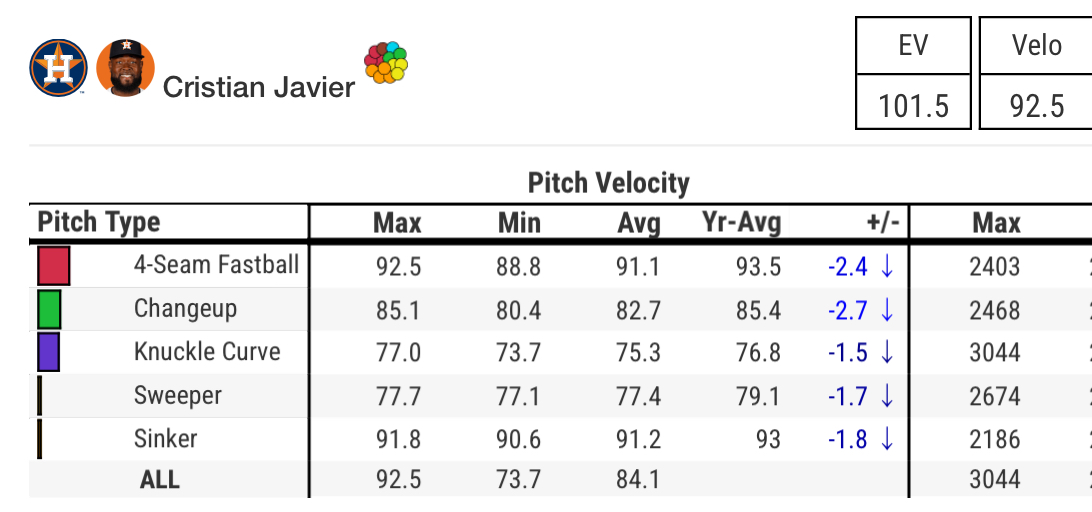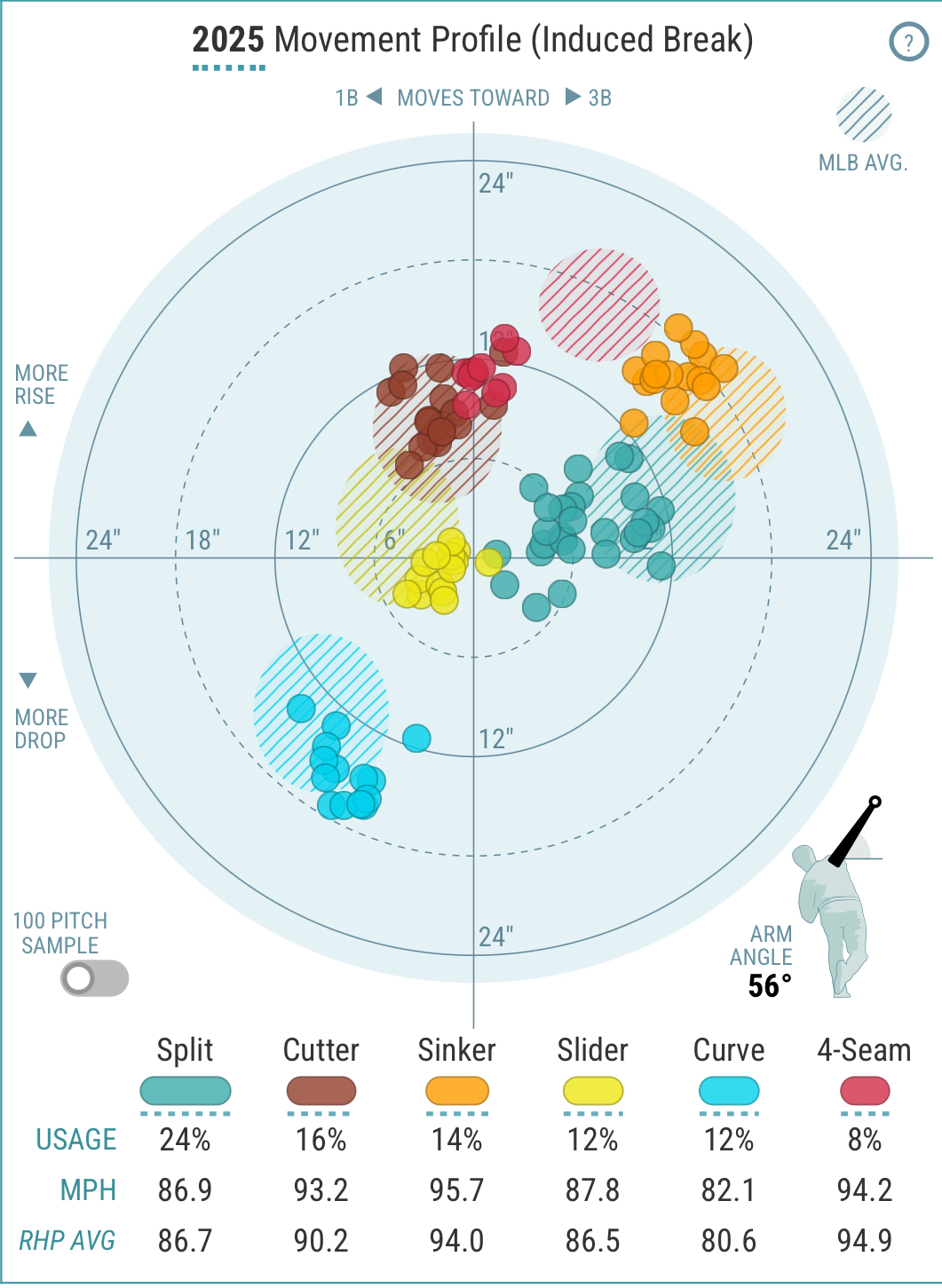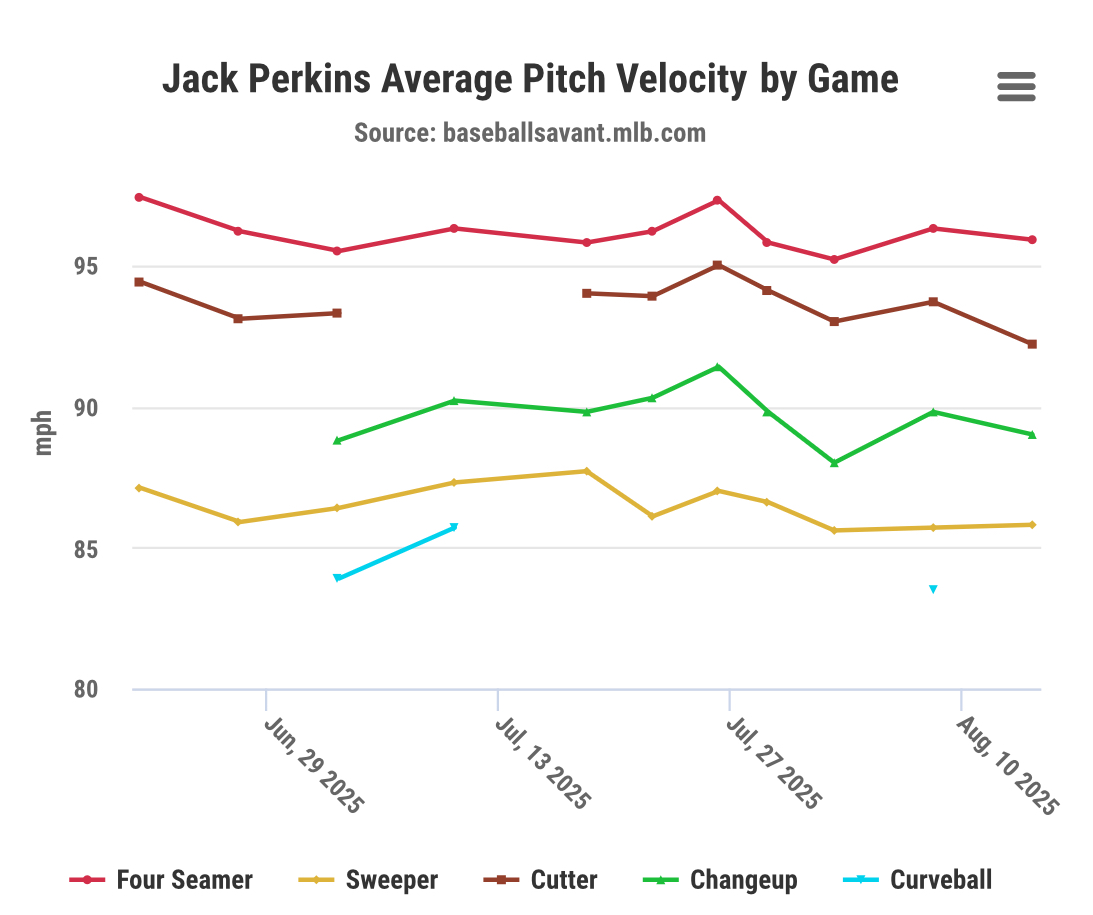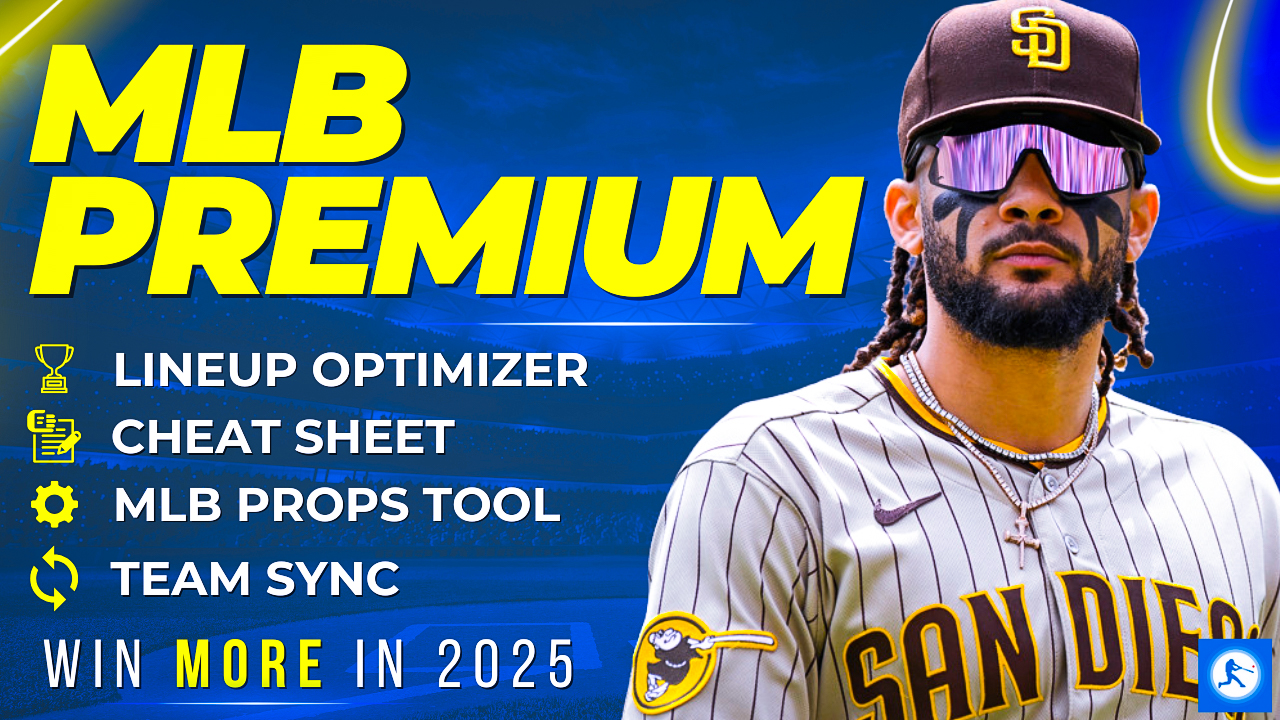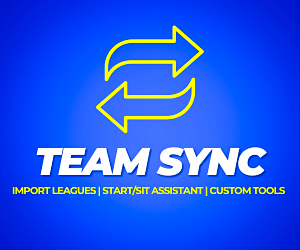Michael Cecchini deep dives into three fantasy baseball starting pitchers to decide if their surprisingly good form merits a roster spot or staying on the waiver wire for Week 21 (2025).
Welcome back to our weekly Unlikely Aces article. Every week of the fantasy baseball season, we examine a few emerging pitchers to determine whether we buy into their performance level. Are these pitchers worth a spot on your fantasy roster, or should you leave them on the waiver wire?
In this edition, we look at Cristian Javier, Hurston Waldrep, and Jack Perkins to decide if they are worth adding to our fantasy squads. All three have pitched well recently, and their roster rates continue to climb.
So, let’s dive into the analysis of Javier, Waldrep, and Perkins. Should you add any or all of them to your fantasy teams?
Be sure to check all of our fantasy baseball lineup tools and resources:- Fantasy baseball trade analyzer
- BvP matchups data (Batter vs. Pitcher)
- PvB matchups data (Pitcher vs. Batter)
- Who should I start? Fantasy baseball comparisons
- Daily MLB starting lineups
- Fantasy baseball closer depth charts
- Fantasy Baseball live scoreboard
- Fantasy baseball injury reports
Cristian Javier, Houston Astros
Javier has long been the prototype of a high-potential, high-risk starting pitcher. He began his career in the Astros bullpen due to control issues, but eventually developed as a starter. He broke out like a borderline ace in 2022 with a 2.54 ERA, 0.95 WHIP, and 194 strikeouts in 148.2 innings (33% K%).
The following season proved frustrating for fantasy managers as Javier’s velocity, strikeouts, and results dipped noticeably (4.56 ERA, 1.27 WHIP, 23% K% over 31 starts). Despite a partial ERA bounce back to 3.89 over seven starts in 2024, Javier’s velocity fell to 91.7 mph before he hit the IL and required Tommy John surgery.
Javier was just activated in early August and gave us hope in his first start back by outdueling Garrett Crochet, allowing five baserunners and striking out five over five innings. Most importantly, he sat at 93.5 mph on his four-seamer, which was almost in line with the 93.8 mph average from his great 2022. His pitch movements looked much the same, too, and he even debuted a new sinker.
Then came his second start on Sunday against the Orioles. Javier left after three innings and 50 pitches, and his velocity was way down across the board:
The good news is that, reportedly, Javier was removed on Sunday because he was dealing with an illness (a bug is reportedly going around Houston’s clubhouse).
The illness might explain the velocity drop, but it’s noteworthy because 91.1 mph is even slower than Javier’s 2024 velocity, when his strikeout rate plummeted to 18%. Of course, he is also returning from major arm surgery.
The short start and concurrent velocity drop muddies the analytical waters a bit, so let’s assume Javier’s arm is healthy and focus on his first start.
At his best, Javier was a master of the rising fastball. He generated an impressive 19” induced vertical break from a lower 33-degree arm angle. This led to elite 29% whiff rates on his four-seamer and weak contact in the air.
For example, in 2022, Javier induced a 13.2% pop-up rate, almost double the league average (7.1%). Batters did not hit the fastball hard, with an 89.1 average EV and .317 xSLG. Those numbers worsened significantly in 2023-24, coinciding with a decline in his velocity.
His fastball metrics from the first start of the year show promise, provided the 93-plus mph velocity holds, although they were not identical to his peak. Javier flashed a still-plus 19.2” IVB, although his arm angle was up to 36 degrees, which diminishes the fastball’s rising effect somewhat. He also lost about 3” of horizontal run, from 7.3” in 2022 to 4.2” now. The latter number is closer to last season’s inferior pitch (5.8”).
The sweeper is Javier’s other main weapon. Like the fastball, this year’s version generally looks similar to his peak -- but not quite the same. In his first start, it had similar velocity (79.1 mph) and horizontal movement (15.8” to 15.1”), but the current version dropped 3” more. The spin rate was consistent, and he still got plenty of sweeper whiffs in the first start (35.7%).
However, we must note that Javier only threw two sweepers (4%) at the start he left early due to illness. While the Orioles only had three righties in the lineup, that is an unusually low usage of a pitch he typically throws 30% of the time. We don’t want to speculate about injury, but sweepers are known to put stress on the elbow.
Verdict: Javier has shown some promising signs, including good velocity and pitch movement in his first start back from a long IL stint. His velocity and pitch movement declined in his second game, but if that was simply due to illness and he recovers as expected, Javier could prove to be a major boon for the fantasy stretch run, if not quite the ace we saw in 2022. He’s worth an add in almost every league to find out.
Hurston Waldrep, Atlanta Braves
Yes, “Hurston Waldrep” might sound like the name of a 19th-century oil robber baron or Old West sheriff, but it also translates to one of the top prospects in the Braves’ prolific pitching system.
Atlanta’s No. 5 farmhand, per FanGraphs, the prospect Waldrep was known for a nasty splitter, a plus slider, a “round down" (i.e., hittable) but high-velocity fastball, and inconsistent control. His minor league numbers reflect the scouting report.
For example, Waldrep posted a 4.42 ERA and 1.47 WHIP this year in Triple-A, with too many walks (12.3%) and a decent but unremarkable 92 strikeouts in 92.1 IP. However, Waldrep’s splitter and sinker usage allowed him to avoid home runs at Triple-A (.79 HR per 9) while keeping the ball on the ground 56% of the time.
Waldrep made a brief and failed stint in the majors last year. When he was called up this season, he first worked in a swingman role for the Braves, but due to injuries, he has now started two straight games. Across his three appearances, Waldrep holds a 1.02 ERA and 0.79 WHIP.
There are encouraging signs under the hood, too, including a much-improved 7.6% walk rate. That’s backed up by an above-average 104 Location+, a major uptick from Waldrep’s dismal 64 score in 2024. He is zoning his non-splitters over 60%, and he sports an 18.5% called strike rate, which would rank fifth among qualified starters.
On the other hand, his 37.8% ball rate is quite high and suggests a walks correction is imminent.
Waldrep is missing bats at a decent clip, with 11.6% overall swinging strike and 25.8% strikeout rates. That’s because his splitter is INCREDIBLE. The pitch drops 5” more than average, with two inches less horizontal break than comparable pitches. It has yielded 27.3% swinging strike and 54.3% whiff rates.
The splitter allows an absurd .048 batting average and .042 wOBA. These are small samples, but FanGraphs’ Stuff+ model grades it at 142; only Logan Gilbert’s splitter garners a (barely) higher score (143) among starters.
The splitter was always nasty, but importantly, Waldrep remade his arsenal since we saw him last year. He formerly led with a four-seamer as his primary fastball; it got crushed. Now, he has added a sinker and a cutter, which he throws 15-20% of the time each, while reducing the four seamer to 9%.
Waldrep now has a robust mix and throws most of his pitches harder than league average.
Perhaps due to those changes, Waldrep has yet to allow a home run through 17.2 major league innings. The new sinker and cutter each generate a 57% grounder rate with 4° and 3° average launch angles. Overall, Waldrep is keeping the ball on the ground 50% of the time.
He is also throwing more curveballs, especially to lefties, who slugged .875 off him last year. He’s reduced four-seamer usage against southpaw batters and dialed up the curve to 15%. The pitch has yet to allow a hit to either handedness, and lefties have whiffed 66.7% of the time against his curveball.
Waldrep’s recent start last Friday against Cleveland was especially encouraging. He leaned into his cutter as his main fastball (24% usage). His splitter and slider were cooking against a team that usually makes a lot of contact, generating 13 whiffs on 25 swings (52%)!
Verdict: Waldrep throws the splitter a LOT; at 24%, it’s his most-used pitch. Splitters are notoriously difficult to command, and we must remember his 37.8% ball rate, which is very high. As a result, Waldrep may always have control issues, and we shouldn’t buy a sub-8% walk rate. The good news is that he’s no one-trick pony now, as he features six different pitches. Research suggests wider repertoires yield better results, making Waldrep worth a look in 12-team and deeper leagues.
Jack Perkins, Athletics
Perkins caught our attention when he rocketed up strikeout leaderboards over nine starts at Triple-A. Driven by a high-velocity fastball and nasty slider, the right-hander punched out 38.4% of batters (13.9 K/9), backed by a 14% swinging strike rate (SwStr%).
The Athletics called up Perkins in June, and he initially worked out of the bullpen. Over eight relief appearances, he pitched to a 2.75 ERA and 0.92 WHIP while striking out opponents at a 24.7% clip. He averaged 96.3 mph on his four-seam fastball in the bullpen. The strikeouts were solid but surprisingly low given a stronger 16% swinging strike rate.
Perkins moved into the rotation at the beginning of August. He struggled in his first start, allowing three earned runs to Arizona on five hits and three walks over just three innings. His velocity dropped a tick on all his pitches, and he was uncharacteristically wild. However, Perkins avoided hard contact and dealt with unfortunate hit luck, as D-backs balls in play averaged a meager 78.3 mph EV.
Perkins’ next two starts showed far more promise. One key was the velocity bouncing back closer to his Triple-A and bullpen levels. Everything was up, and the fastball in particular held at 96 mph:
In his third start, on Friday against the Angels, Perkins racked up 18 swinging strikes on 103 pitches, including eight on his sweeper and six on the changeup. Overall, he posted a 37% whiff rate and 29% CSW%. However, he did walk three batters.
Perkins throws from a fairly low 32° arm angle and 5.4" release height. The lower release point doesn’t quite mitigate his fastball’s suboptimal 14.3” induced vertical break. Perkins gets 11.5” of arm-side run with the heater, which is a substantial 2.6” greater than average. He unfortunately struggles locating it: a 77 FanGraphs Location+ score indicates well below-average command.
The plus velocity and poor locations have led to mixed results: opponents are hitting .300 (.268 xBA) on his four-seamer but whiffing 25.2% of the time, which is above average.
Perkins’ secondaries are strong. His sweeper moves 13” glove-side with plus velocity at 85.8 mph. So far, it has dominated righty hitters (.154 wOBA, 40% whiff rate). He also has a changeup to put away lefties, and overall, it has not allowed a hit yet (.028 xBA), while carrying a 64% whiff rate. Perkins uses a cutter to hitters on both sides, and despite a .263 BAA, it has yielded weak contact (82.3 EV).
Perkins continues to suppress home runs in the majors (.94 HR/9), a skill he also showed in Triple-A (.68 HR/9). Despite lacking a sinker, he has a solid 43.8% ground-ball rate. Overall, he is allowing an 85.2 average EV in the majors, which would rank among the elite qualified starters.
So, Perkins misses bats and avoids hard contact, but it is fair to wonder if he has the control needed to succeed as a starter long-term. His current 10.1% walk rate is right in line with his minor league experience, where he held double-digit walk rates across stops in both Double-A and Triple-A. His 37.7% ball rate is also a couple of points worse than average, and a 91 Location+ screams reliever.
Verdict: Perkins has multiple exciting traits for a fantasy starter: good velocity, bat-missing ability, and mitigating hard contact. There is some risk given his control questions, but as long as the A’s keep him in the rotation, he is worth a pickup even in 12-team leagues to see if he can keep pitching to his recent form.
More Fantasy Baseball Advice
Download Our Free News & Alerts Mobile App
Like what you see? Download our updated fantasy baseball app for iPhone and Android with 24x7 player news, injury alerts, sleepers, prospects & more. All free!


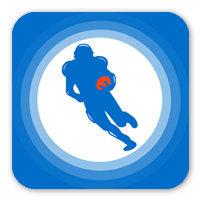



 RADIO
RADIO








